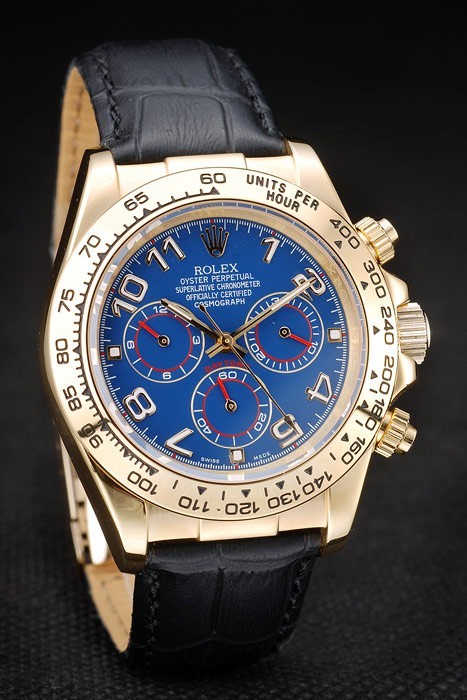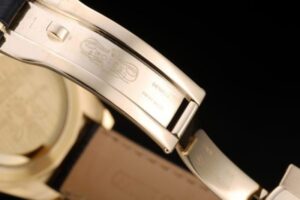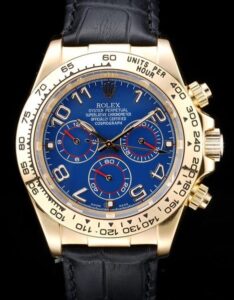A Comprehensive Comparison of Tudor vs Rolex 2025

Since its revitalization in 2010, Tudor has made significant strides with collections like the Black Bay and Pelagos. Once known primarily as Rolex’s more affordable sibling, Tudor has quickly established its own identity. This evolution raises a common question: if Rolex and Tudor share ownership, what sets their watches apart?

Tudor’s Origins
Hans Wilsdorf, the founder of Rolex, launched Tudor in 1926 to offer a more budget-friendly yet dependable alternative to Rolex’s high-end replica watches. He transferred key features of Rolex watches to Tudor, such as the Oyster case and the self-winding ‘rotor’ movement. Tudor began by offering models like the Tudor Submariner ref 7922, which debuted a year after Rolex’s Submariner, as well as the Oyster and Prince lines. Over time, Tudor was seen as a more accessible choice for those aspiring to own a Rolex. However, with its 2010 rebranding, featuring nostalgic designs like the Chrono, Pelagos, and Black Bay, Tudor now stands on its own as a brand known for rugged tool watches that avoid overt status symbols.
Brand Identity
Tudor and Rolex have distinct brand identities. Tudor, being the younger brand, experiments with innovative materials and bold designs, while Rolex is renowned for its prestigious image, steeped in history and luxury. Rolex’s collections, including the Submariner, Daytona, and Datejust, have remained largely consistent, emphasizing traditional materials and in-house manufacturing. Tudor, in contrast, embraces a more avant-garde approach, utilizing materials like bronze and titanium, and features ambassadors known for pushing boundaries, such as David Beckham and Lady Gaga. 
Design and Aesthetics
Rolex is celebrated for its instantly recognizable designs, such as the classic Datejust and Submariner. These designs have evolved slowly, prioritizing technical advancements over radical changes. Tudor, however, uses its platform for creative experimentation, resulting in designs that diverge from Rolex’s more classic style. Tudor models, while inspired by Rolex, incorporate unique elements like bronze and unconventional straps.
Movement
Historically, the main distinction between Rolex and Tudor lay in their movements. Rolex has used in-house movements since 2004, following its acquisition of a movement manufacturing facility. Tudor, initially reliant on movements from ETA SA and Valjoux, introduced its first in-house movement, the Cal. MT5621, in 2015. Tudor’s in-house calibers are now gradually replacing modified ETA movements across its range.
Materials and Pricing
Rolex is known for its meticulous material standards, including proprietary alloys like Everose gold and Oystersteel. Tudor, while still high quality, uses standard materials or sources them from third parties. Consequently, Tudor watches are generally more affordable, making them a popular choice for newcomers to luxury watches. For instance, as of April 2024, the Rolex Oyster Perpetual 36mm is priced at $6,100, whereas the Tudor Black Bay 36 is available for $3,200.
Comparing Popular Models
When comparing models like the Tudor Black Bay GMT and the Rolex GMT-Master II Pepsi, the differences are evident. The clone Rolex GMT-Master II, a classic since 1954, features an Oystersteel case, a Triplock waterproof system, and a COSC-certified Caliber 3285 movement, retailing for $10,700. Tudor’s Black Bay GMT, a more affordable alternative at $4,300, offers similar functionality but with a different bezel material and a snowflake 24-hour hand.

Similarly, the Tudor Submariner, a historical model from 1955, served as a more cost-effective version of the replica Rolex Submariner introduced in 1953. Despite differences in movement and certification, both watches share a rugged design suited for diving.
Today, Tudor is not just an affordable alternative to Rolex but a distinguished brand in its own right. While Rolex offers unparalleled legacy and prestige, Tudor provides robust, adventurous designs at a lower price point. Both brands deliver exceptional quality, so your choice ultimately depends on whether you prioritize perfect luxury or innovative design.